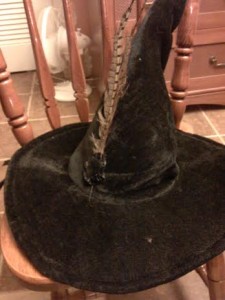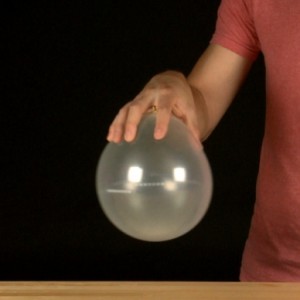We Can Only Scream If We Have A Voice
Let’s talk about voice. Let’s talk about connections. Let’s talk about screaming.
I wear a lot of hats in the course of my days. This past week, I’ve been wearing this one:
The lesson last Halloween week in my writing labs was “Nobody will hear you unless you have a voice, and you’ll only have a voice if you’ve got something to say.” This ties to my ongoing themes about connections and schema and how everything affects everything else.
One of my favorite experiments is Steve Spangler’s Screaming Balloons. It’s also one of the simplest experiments – you need only two things! – but it can be used in so many different ways.
The science behind the scream is in the inside of the balloon. Depending on what’s inside, you’ll get no sound, a soft sound, a pleasant sound, or a really really loud scream that sounds a lot like those earsplitting vuvuzelas that had to be banned from the Brazilian World Cup!
The sound your balloon will make depends entirely on what it’s got on the inside. You know, pretty much like the voice you have depends entirely on what YOU’VE got on the inside.
If you are full of many-faceted connections, your voice will be loud, proud, and well worth listening to. With many-faceted connections, in fact, your voice will be of vital importance, and listening to it will enlighten the people around you who are lucky enough to hear it. When you use a voice full of schema, people will pay attention.
Now, a Screaming Balloon will not enlighten all the people around it, but it’s a pretty good analogy all the same.
Put a smooth facetless marble, for example, inside the balloon, and it won’t scream. You’ll just hear the round, smooth marble spinnning around and ’round. It won’t have much of a voice because it’s not complicated enough.
But here at Spangler Science, we don’t put voiceless marbles in our balloons. We put hex nuts in them, because the facets on a hex nut will give the balloon enough reason to scream. The complications on the hex nut will give the balloon a voice. Screaming Balloons definitely have a voice!
Wait. Why was I wearing Professor McGonagall’s hat to school last week? Besides it’s being Halloween, you mean? Easy enough.
When I talk about schema, I am also talking about attention. My beginning writers need to be reminded, over and over, about the importance of paying close attention to, well, everything. Distractions exist, of course, but letting themselves be easily distracted by things can be disastrous, depending on the context.
Getting distracted while driving can be fatal. Getting distracted while eating can be messy. Getting distracted in my writing lab can mean the professor might dump something on your head.
Don’t let the professor distract you too much.
Fair warning.
 Jane Goodwin is a professor of expository writing at Ivy Tech Community College, a hands-on science teacher for College for Kids, a professional speaker and writer, and a social media liaison for Steve Spangler Science. She wanted to be a ballerina and an astronaut, but gravity got the better of her.
Jane Goodwin is a professor of expository writing at Ivy Tech Community College, a hands-on science teacher for College for Kids, a professional speaker and writer, and a social media liaison for Steve Spangler Science. She wanted to be a ballerina and an astronaut, but gravity got the better of her.







Trackbacks & Pingbacks
[…] Starting at the Stonegate Arts and Education Center in Bedford, Indiana, my Ivy Tech students and I ended our writing lab by discussing how writers sometimes have to describe something in an unusual way. Mention was made of the South African vuvuzela of soccer World Cup infamy, and so my aspiring writers created this sound wit… […]
Leave a Reply
Want to join the discussion?Feel free to contribute!